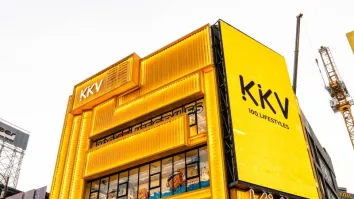The ‘technology’ shots that stores need to level up customer experience
By Dheeraj ShahStores have always been at the epicentre of retail disruption, be it the onslaught of digital or the recent pandemic. Despite ominous predictions, stores have risen like a phoenix to cater to shifting business landscapes and shopper behaviours. Retailers who view their stores through a new lens will realize endless possibilities because:
- Stores are seeing footfall of a different kind: While there is a dip in in-store footfall, there has been a surge in footfall of a different kind—buy online pick up in-store (BOPIS), curbside pickup. Store only footfall may be an irrelevant key performance indicator, albeit temporary. Hence, the way we measure footfalls has to change.
- Comparable sales just got a new avatar: Stores are now seeing newer revenue streams like influencer streaming and live commerce.
- Tactile experiences have changed: The shopping experience has changed from see, touch, and feel to see, digitally touch, and feel as retailers are embracing mobile usage in stores for contactless product discovery, checkout, and payments.
- Experiential retail has got bigger: New technologies like 7D and 9D are taking interactive and immersive experiences to the next level. Shoppers will visit smart stores to experience them.
- In-store shopping is now shoptainment: Visiting stores will be a welcome change for lockdown-weary shoppers and a major source of entertainment. Customers will visit stores to find out what has changed, what do brands have to offer, and what others are buying—abundance, indulgence, and flaunting/pride of owning status symbols will continue to produce happy hormones.
- Ethical practices and sustainability are no longer nice-to-have: Shoppers, especially millennials, are deeply concerned about ethical sourcing and are seeking proof.
- Shopping has become borderless: With phygital retail powered by augmented reality/virtual reality and emerging technologies, shoppers can experience stores from where they are. They can connect with associates virtually to make buying decisions.
Retail Stores are Experiencing Tomorrow Today
There is less to debate about the endorphin rush that shopping at a physical store provides as compared to shopping at any other channel. However, the key now for the brick-and-mortar channel is to be a catalyst and supersede the convenience of omnichannel while keeping the excitement alive. Similar to a brilliant casting coup pulled off by Hollywood (think Cate Blanchet in Manifesto with over 13 roles or Tom Hanks in Cloud Atlas with over four roles), retail stores are now expected to portray multiple roles:
- Excite and Entertain: With social distancing norms driving the urge for physical interaction more than ever before, stores are expected to reinvigorate the excitement through innovative repurposing of store products and offerings and through shoptainment.
- Explore and Engage: A complete reimagination of product exploration and customer engagement would be key given the increasing rise of enter and exit autonomous scan and go stores. As customers increasingly look for online-like convenience and a non-intrusive shopping autonomy while at the store, product exploration needs to become more phygital driven by hygiene. Showrooming, once considered a taboo, is likely to create new opportunities for store associates to engage with customers better and drive more value.
- Enable and Exploit: Irrespective of channel preferences, stores are most likely to become the nucleus of the omnichannel proposition enabling curbside pickup, BOPIS, buy online ship to store or BOSS, and micro-fulfilment or crowdsourced deliveries.
So, what does all this mean for stores? Stores need to dynamically choose multiple avatars based on the context of customer interaction and the roles of store associates. What makes it more challenging is that all these avatars need to be portrayed simultaneously at the same time, unlike movies where there is a liberty of retakes and post-production.
This makes it imperative for stores to leverage the power of machines through artificial intelligence or machine learning algorithms for driving phygital customer experiences, workforce management, or intelligent in-store picking, automated micro-fulfilment or smart inventory management to manage demand from different channels or digital twins of stores. Thus, real-time, pre-emptive, cognitive smart stores are the fully vaccinated versions bringing in automation, intelligence, autonomous operations combined with hyper-personalization and unified commerce.
Conclusion
In recent times, several brick-and-mortar retailers were able to meet the rising digital demand by moving their store inventories and by quickly enabling contactless fulfilment, while achieving inventory productivity and business goals.
Many are keen to accelerate sales growth, improve gross margins, increase inventory productivity, right-size selling, general and administrative expenses, improve working capital efficiencies, and lower the cost of doing business. Algorithmic retail and the machine first paradigm can help move omnichannel retail evolve into zen mode, transcending into purpose-centric shopping, ultimately freeing retailers from the slavery of channels.


















 Advertise
Advertise





